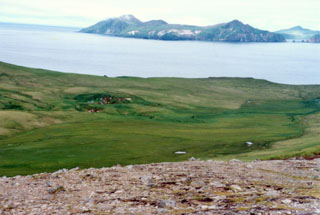Report on Davidof (United States) — 8 December-14 December 2021
Smithsonian Institution / US Geological Survey
Weekly Volcanic Activity Report, 8 December-14 December 2021
Managing Editor: Sally Sennert.
Please cite this report as:
Global Volcanism Program, 2021. Report on Davidof (United States) (Sennert, S, ed.). Weekly Volcanic Activity Report, 8 December-14 December 2021. Smithsonian Institution and US Geological Survey.
Davidof
United States
51.97°N, 178.33°E; summit elev. 328 m
All times are local (unless otherwise noted)
Earthquake swarms either related to tectonic processes or volcanic unrest were recorded in the vicinity of Davidof during 8-10 December. The largest earthquake was a M 4.2 recorded at 1045 on 10 December. AVO raised the Aviation Color Code to Yellow and the Volcano Alert Level to Advisory due to the possibility of escalating volcanic unrest. Small earthquakes continued to be detected during 11-14 December, though at a lower rate and amplitude. Cloudy or mostly cloudy satellite and webcams views showed no volcanic activity.
Geological Summary. A cluster of small islands between Segula and Little Sitkin in the western Aleutians, the largest of which is Davidof, are remnants of a stratovolcano that collapsed during the late Tertiary, forming a 2.7-km-wide caldera. The islands include Khvostof, Pyramid, Lopy, and Davidof; the latter three form the eastern rim of the mostly submarine caldera, sometimes referred to as the "Aleutian Krakatau." The islands were constructed above a roughly 100-m-deep submarine platform extending NW to Segula Island; the floor of the caldera lies 80 m below sea level. The islands are vegetated, but lava flows are recognizable, and Smith et al. (1978) suggested a possible Holocene age.
Source: US Geological Survey Alaska Volcano Observatory (AVO)

